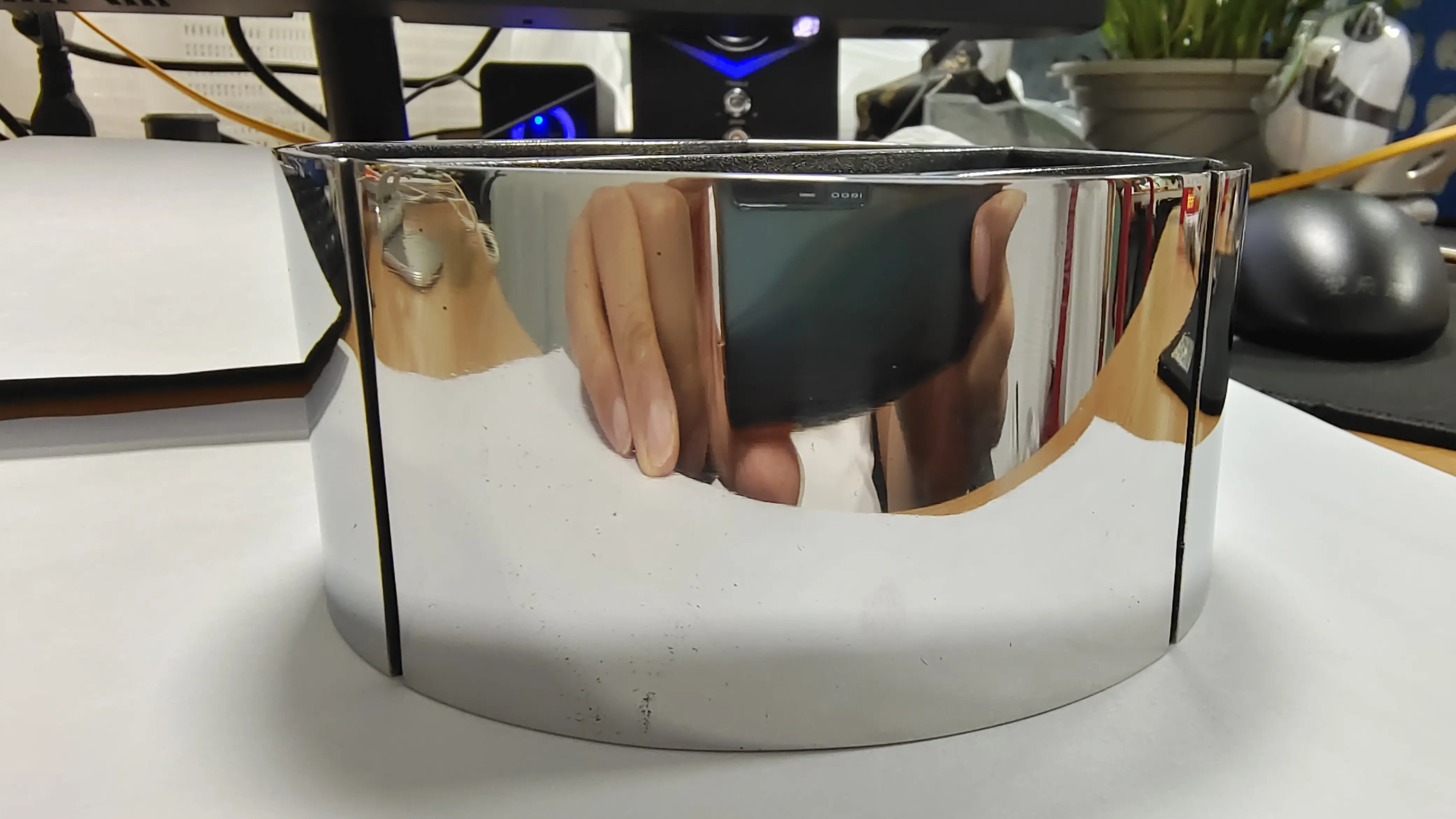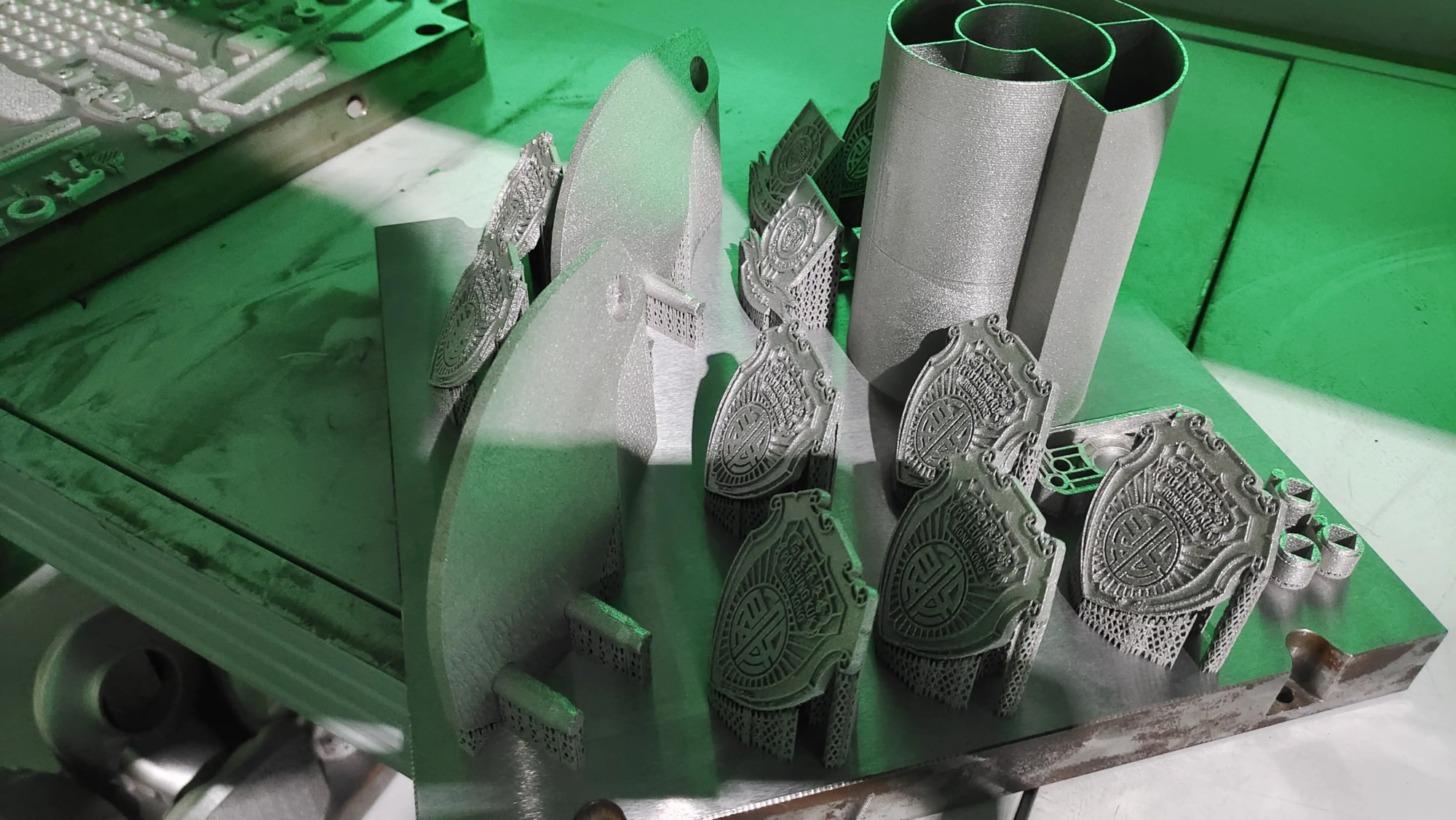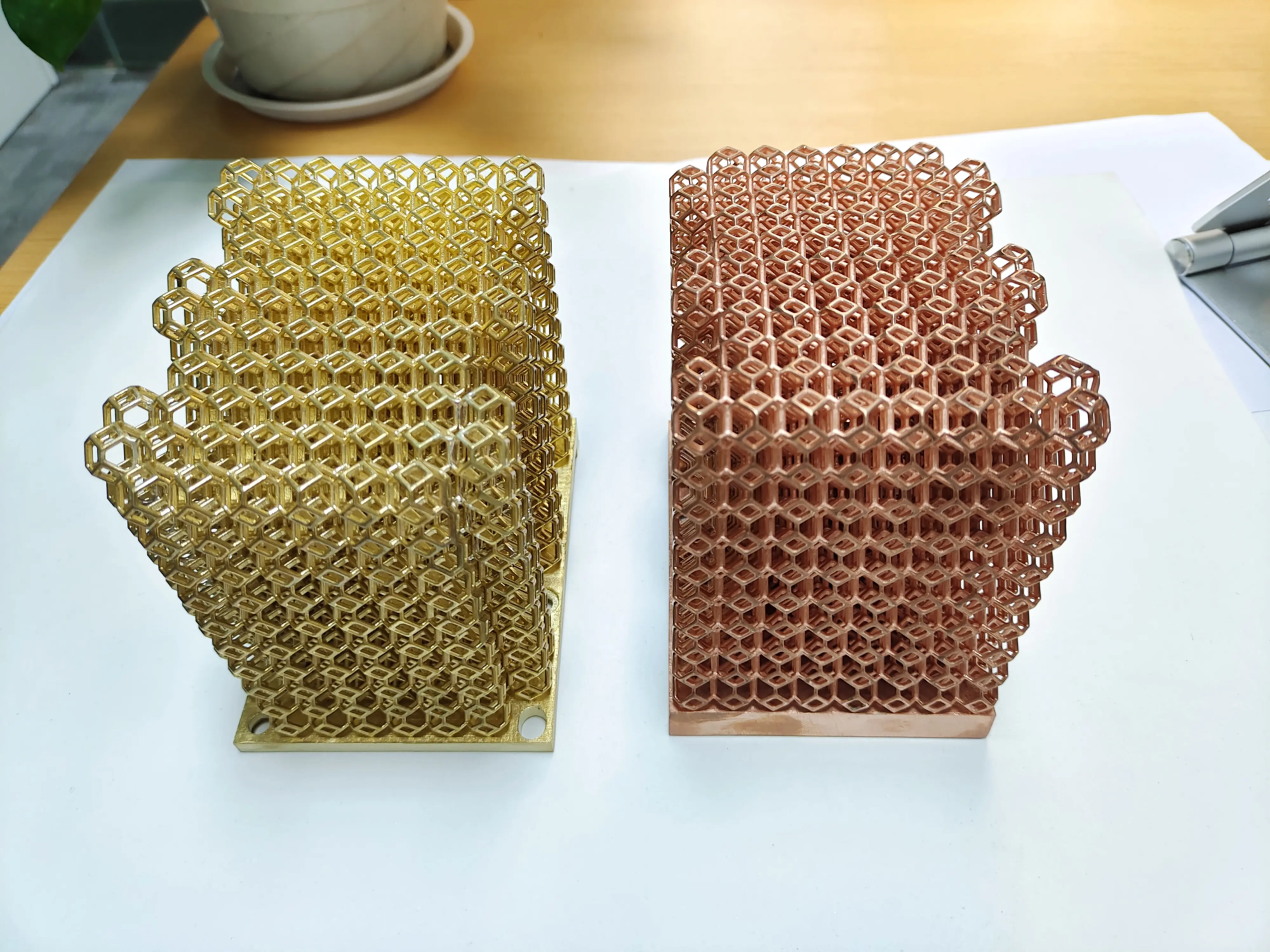Beyond the mold: Revolutionizing taillight lenses with professional 3D printing
The automotive world is filled with a constant thirst for innovation and customization. The humble taillight lens is a component that has a significant impact on both aesthetics and safety. Traditionally, producing these lenses requires expensive injection molding, locked-in low-volume production, complex designs, or rapid prototyping due to high tooling costs. Enter professional-grade 3D printing services – a game-changer that offers unparalleled freedom, speed and precision for taillight lens development.
Why use 3D printed taillight lenses?
Compared with traditional methods, its advantages are obvious:
- Unparalleled design freedom: Forget about mold limitations. 3D printing enables complex geometries, intricate light guides, custom diffuser patterns, brand-specific logos integrated into lenses, and radical shapes previously thought impossible or too expensive.
- Rapid prototyping and iteration: Design, print, test, refine – all within days or even hours. This significantly speeds up the development cycle for new models, custom models or aftermarket parts. Testing decoration, light diffusion and color effects becomes very efficient.
- Small batch and customization: Ideal for niche vehicles, classic car restorations where original parts are not available, limited edition runs or highly personalized automotive projects. Economically produce custom lenses that would otherwise not exist.
- Cost-effectiveness (for prototypes and small batches): Eliminates large upfront investment in injection molding tools. For prototypes, functional test units or low-volume production, 3D printing is much more economical.
- Material innovation: Get advanced transparent and translucent photopolymer resins designed to meet optical clarity, color stability, weatherability and automotive needs.
Material Selection: At the Heart of Optical Clarity
Choosing the right materials is crucial for functionality, durability and appearance. Professional services offer materials well beyond basic consumer grade filament:
- High performance transparent resin (SLA/DLP/3SP):
- VeroClear / Transparent Resin (SLA): Offers excellent optical clarity, good detail resolution and surface finish close to that of glass or polycarbonate. Ideal for prototypes requiring precise light transmission studies.
- ABS-like translucent/PC-like translucent: Offers superior impact resistance and durability compared to basic transparent materials while maintaining good light diffusion. Great for functional prototypes and potentially some low-volume end-use parts.
- Special optical resin: Specific resins designed for high transmission at specific wavelengths (for example, high transmission red or amber for signal light) or very low haze. Critical to meeting regulatory standards.
- Material Jetting (MJF): Provides a smooth surface and transparency that may be suitable for prototyping, but may have different optical properties than premium SLA resin.
Professional service assessment of critical material properties:
- Transmittance (%): How much light passes through.
- Haze (%): The percentage of light that is scattered, causing haze; low haze is critical for signal lights.
- color: Keep the true color (red/amber) without unwanted filtering.
- UV stability: Resistant to sun yellowing and degradation.
- Impact and chemical resistance: Withstands automotive environmental stresses (temperature, fuel, detergents).
- Regulatory Compliance: Compliance with SAE J575 (vehicle lighting standard) and regional automotive regulations is critical for end-use parts.
3D printing for successful design: more than just shapes
Success with simulated injection molding requires a design specifically tuned for additive manufacturing:
- Wall thickness: Ensure uniform wall thickness (usually around 1.5-2mm minimum, depending on material/resin) to prevent cracking during printing, curing or post-processing and to minimize light inconsistencies. Avoid thick parts.
- Support structure: Strategically place supports on non-critical surfaces to minimize post-processing marks on optically critical areas. Professional services optimize support generation and removal.
- Light diffusion design: Integrated lens patterns (Fresnel patterns, microprisms, pointillism textures) Enter CAD models effectively control beam spread, brightness and eliminate hot spots. Consider how the layer lines themselves affect diffusion.
- Draft angle: Although not as important as molding, a slight draft angle (even 1-2 degrees) on non-critical surfaces able Easily demold and remove supports from the build platform, reducing risk and improving surface quality.
- Feature details: Understand the resolution limitations of your chosen printing process. Discuss minimum achievable feature sizes and tolerances with your service provider.
- Shell interface: Accurately simulate mounting points, gasket channels and sealing surfaces to ensure a secure and weatherproof fit within the taillight assembly.
Professional printing and post-processing: achieving superior optical performance
Precision is involved at every stage of the process from documentation to finished lens:
- Resin treatment: Professional services carefully handle and store resin to prevent contamination and ensure material stability.
- Calibration print: Using an industrial SLA, DLP, 3SP or MJF printer in a controlled environment ensures consistent layer adhesion, dimensional accuracy and predictable material properties. Orientation is critical to minimizing visible layer lines in critical areas.
- Perfect support removal: Extra care is required when removing supports to avoid gouging or scratching the optical surface. Skilled technicians and specialized tools are critical and may involve iterative removal of low grit and undercuts.
- Curing (critical for resin): In order to achieve full material strength, stability and optimal clarity/surface finish, UV post-cure is necessary. Over time, insufficient curing can lead to cloudiness, brittleness, and yellowing. Dust-free cabinet to avoid contamination.
- Surface Treatment Magic:
- Sanding and polishing: Progressive abrasives (usually starting out coarser than you think, like P400, and working your way up to P2000+), followed by high-speed polishing with special compounds (e.g., cerium oxide for optical clarity) to achieve near-glass clarity and eliminate haze and visible layer lines. This step requires considerable skill and specialized tools.
- Vapor Smoothing/Coating: DIY methods such as hand polishing with DIY clear car coating. Specialist manufacturers have different post-processing stations that can achieve this more reliably.
GreatLight: Your partner for advanced optical prototyping
Pushing the boundaries of custom taillight lens development requires more than a 3D printer; it requires expertise, advanced materials, and meticulous precision. where is this huge lightthe leader in professional rapid prototyping with outstanding performance.
Although we are known for our advanced technology SLM technology solve complex Metal Part of the challenge, our expertise extends to High-precision photopolymer processing. We leverage cutting-edge DLP/SLA printers and in-depth knowledge of optical-grade resins to deliver superior taillight lens prototypes and low-volume parts.
- Clear expertise: We understand the nuances of printing and most importantly, Post-processing Transparent and translucent materials that achieve the clarity, color fidelity and low haze required for automotive applications.
- Powerful post-processing: Our technicians have the expertise and tools to achieve flawless support removal, precision sanding and advanced polishing/steaming techniques to provide an optically smooth surface.
- Material guidance: We advise on the best resins (VeroClear, specialty translucent materials) for your specific functional needs, whether rapid prototyping, light testing or functional demonstration units.
- End-to-end solution: From design optimization consultation (DFAM) to expert printing, rigorous finishing and assembly testing of the enclosure, we provide a seamless service. Do I need a master model to create a silicone mold? Our precision is perfect.
- Speed and quality: Benefit from fast turnaround times without compromising the meticulous attention to detail and quality required for automotive-grade output.
Comply with legal and safety compliance: Important instructions
Although 3D printing has huge potential, For any taillight intended for actual road use, automotive lighting regulations (SAE J575, US FMVSS 108, International ECE) must be strictly adhered to.
- prototype: Printed lenses are ideal for design verification, fit inspection, photometric test setup and functionality Preview lighting effects. Use certified production methods to optimize designs before adopting them.
- End use: For road-legal taillights, professionally printed lenses are available for some low-volume or special applications if Specific materials and components pass rigorous photometric (luminous intensity, beam pattern) testing and physical durability testing required by relevant regulations. Cooperation with testing laboratories and certification bodies is a must. Never assume that printed lenses are roadworthy.
Conclusion: Lighting the way forward
Professional 3D printing technology has fundamentally changed the landscape of taillight lens design and prototyping. It enables engineers and designers to transcend traditional manufacturing constraints, foster unparalleled creativity and accelerate innovation in automotive lighting. The ability to quickly iterate on complex geometries, achieve precise light diffusion through complex integrated patterns, and economically produce custom or low-volume lenses is undoubtedly transformative.
Success depends on understanding the nuances of the material, careful design for additive manufacturing, and most importantly, working with an expert service provider capable of the demanding post-processing required for optical clarity and durability. For those pushing the boundaries of light, lens innovation, GreatLight is ready to be your partner, combining advanced capabilities with deep domain knowledge to transform your visionary taillight concepts into tangible, high-fidelity reality.
FAQ: 3D Printed Tail Light Lenses
Q: What is the best 3D printing technology for taillight lenses?
Answer: Industrial grade Stereolithography (SLA), PolyJet, Digital Light Processing (DLP), In some cases, material jetting (MJF) is preferred due to their ability to produce high-resolution parts with excellent surface finish and transparency. SLA/DLP offers the best combination of optical clarity and cost-effectiveness for most prototyping needs.
Q: Can I use only clear PLA/PETG filaments with my FDM printer?
Answer: Although it is possible Very On rough models, FDM often results in poor light diffusion (visible hot spots and irregularities), noticeable haze, layer lines, and often lacks the required optical clarity and professional surface finish. For this application, specialty photopolymer resins perform far better than FDM.
Q: How clear can the 3D printed taillight lens be?
Answer: Use high-quality resin such as VeroClear or special optical grade resin. Expert post-processing (Precision grinding, polishing, optical polishing, evaporation), professional 3D printed lenses can achieve clarity Surprisingly close to injection molded polycarbonate or acrylicwith minimal haze and excellent light transmittance, suitable for prototyping and photometric testing.
Q: Are 3D printed taillight lenses strong enough?
A: Properly printed and post-cured advanced resins (such as ABS-like, PC-like photopolymer or PA12 nylon for structural mold tooling) provide good impact resistance for handling, functional testing and prototype evaluation. They are suitable for many end use scenarios if Properly certified durability and optical performance. They often can’t match the decades-long UV stability of thermoplastics like polycarbonate without specialized coatings, which have a very short lifespan.
Q: Is it legal to use 3D printed taillight lenses on my vehicle?
one: warn! Road legality depends on certification to strict regional standards (SAE J575, ECE regulations, etc.). Professional 3D printed parts have potential yes Certification is achieved if specific materials and part designs pass all required photometric tests (light output, beam pattern), durability tests (thermal cycling, impact, abrasion, UV resistance) and color retention tests. This requires the use of commercial-scale photometric test chambers and expensive wear-resistant machines. Never assume that printed lenses meet legal standards. Most prototypes are for development only.
Q: How about red or amber? How is this achieved?
Answer: There are two main methods:
- Colored resin: Print directly using specific resins, tinted to precise industry-specified colors. Particularly suitable for prototypes as the interior and chamber are resin sealed to provide uniform color. Polyjet can print multiple colors of transparent and appropriate red or amber in a single job.
- coating: A specialized translucent color coating is applied after printing.
Q: How does FeiLite ensure optical quality?
A: We use calibrated industrial-grade printers with optical resins and prioritize design for manufacturability. Most importantly, our expertise lies in Dedicated post-processing workflowprogressively sanded by skilled technicians using P400 to P2000+, high-speed polishing with optical compounds, vapor coated for high-gloss clarity, and then dust-free packed.
Q: If I need more than a few prototype shots, can GreatLight help?
Answer: Of course. In addition to prototypes, our high-precision stereolithography printed patterns are ideal for creating High quality silicone mold Used to cast polyurethane (PU) resin lenses in small to medium batches to OEM grade quality. For larger volumes we can discuss expansion solutions. Our SLM metal printing can also quickly produce conformally cooled injection mold inserts or support structures for mass production tools.
Ready to harness the precision and flexibility of professional 3D printing to illuminate your next automotive lighting project? Contact GreatLight today for a consultation and quote on your custom taillight lens development!





